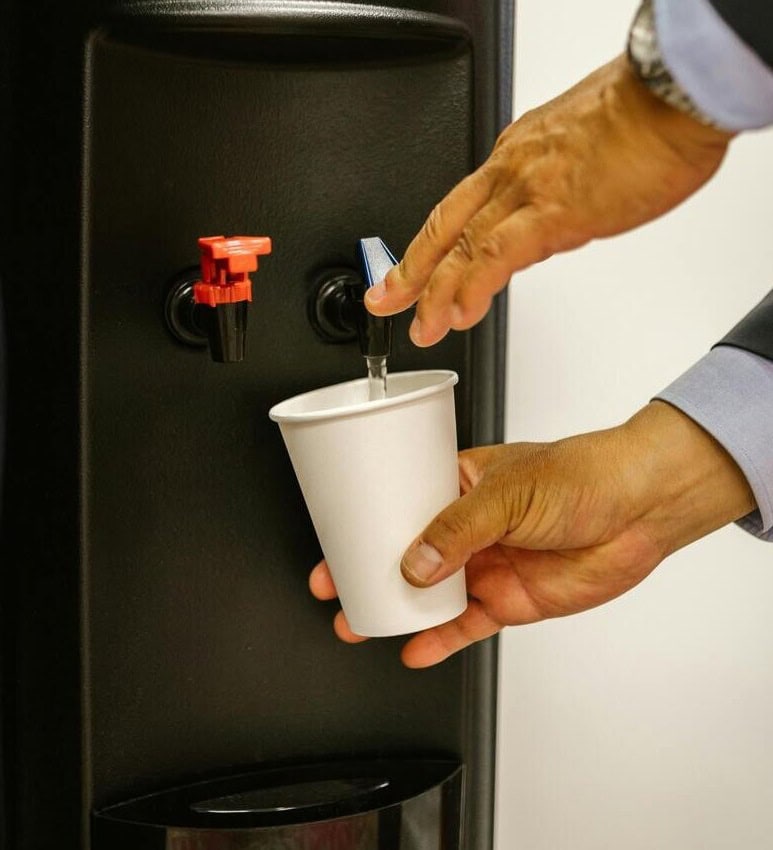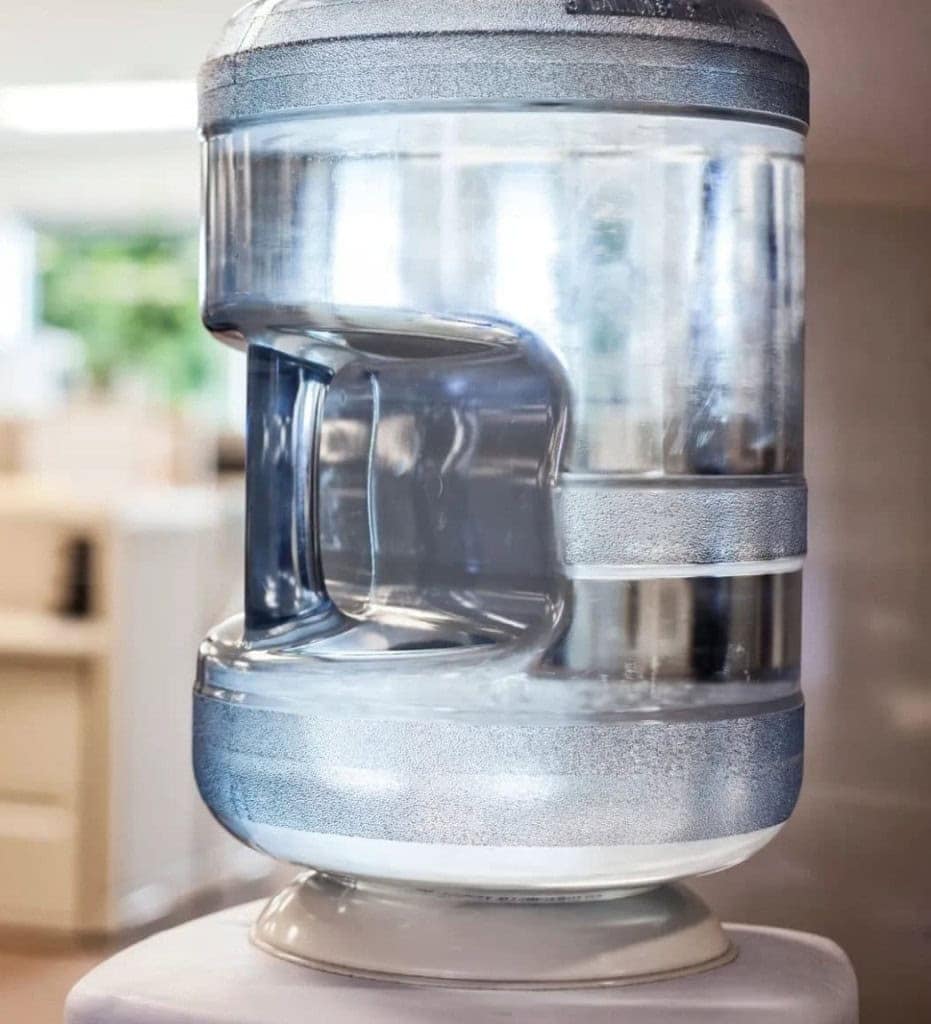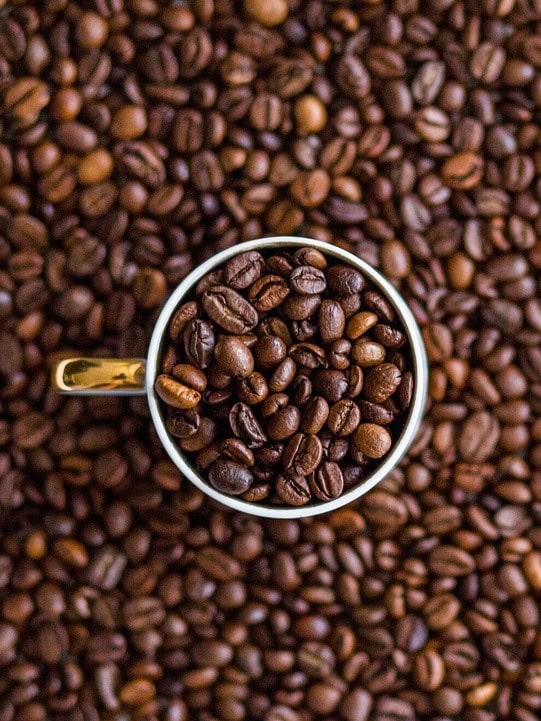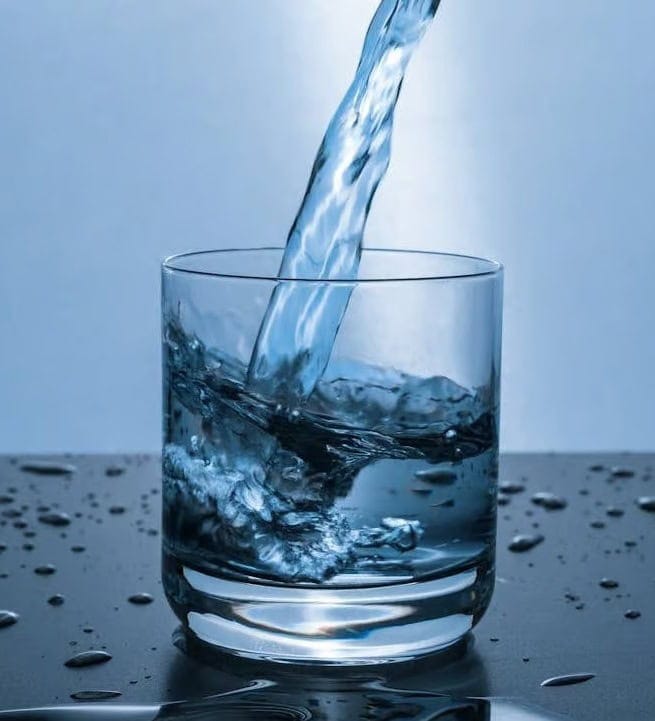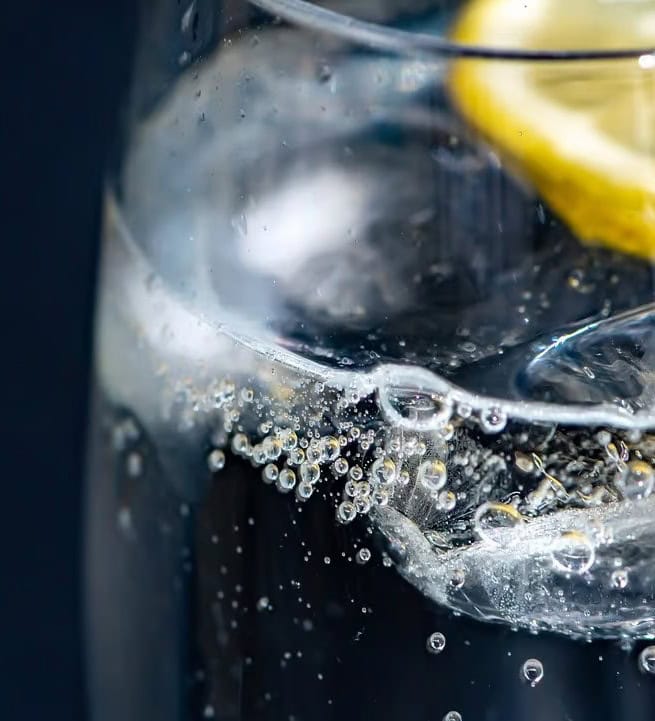Most commercial water coolers last 5 to 10 years, with 7 years being a common midpoint. This range depends heavily on usage intensity, build quality, water conditions, installation standards, and maintenance consistency. Bottled units typically serve reliably for 5 to 7 years, whilst mains-fed units commonly reach 7 to 10 years with proper care.
Importantly, lifespan isn’t simply a countdown timer ticking away, it’s the sum of choices you make from day one and week to week.
The right decisions during selection, installation, and ongoing maintenance can push your unit well into a long lifespan.
7 Factors that influence the lifespan of a water dispenser
Over years of site surveys and maintenance calls, we’ve identified seven critical factors that separate units lasting just a few years from those still performing considerably longer.
Here’s what genuinely matters:
- • Usage
- • Water Quality
- • Environment & Placement
- • Build Quality
- • Filationation Technology
- • Installation Quality
- • Parts Availability & Service Support
![]()
1) Usage Intensity
High-traffic environments create more heating and cooling cycles, accelerating mechanical wear across compressors, pumps, and thermal systems. A busy office pulling 200 dispenses daily will stress components far more than a quiet studio serving 20. More cycles mean more frequent service requirements and shorter intervals between component replacements.
2) Water Quality
Hard water accelerates mineral scale buildup throughout the system. Scale raises the load on pumps and cooling elements, forcing them to work harder and fail sooner.
Areas with calcium-heavy water can see pump failures within years without proper filtration and descaling protocols. Quality filtration systems and regular descaling significantly slow this degradation curve.
3) Environment and Placement
Dust and ambient heat are silent lifespan killers that many facilities overlook. Units placed near heat sources, in dusty warehouses, or with blocked ventilation grilles struggle to maintain optimal operating temperatures.
Tip: Keep air vents clear, provide adequate breathing room around the unit, and avoid placement near radiators or direct sunlight.
4) Build Quality and Engineering
Sturdy construction with corrosion-resistant internals sets a higher ceiling for longevity from the outset. Quality components like stainless steel reservoirs, reinforced housings, and commercial-grade compressors provide the foundation for extended service life.
Aquacool water dispensers are engineered with these durability principles, offering robust construction that withstands demanding commercial environments.
5) Filtration Technology
Superior filtration protects internal components by removing contaminants before they reach sensitive areas.
Modern systems with multiple filtration stages and UVC LED technology not only improve water quality but also reduce mechanical breakdowns caused by contaminated water cycling through the system.
6) Installation Quality
Correct plumbing connections, stable positioning, proper ventilation, and an appropriate electrical supply on day one prevent cascading failures later.
Poor installation creates stress points that manifest as leaks, pump strain, or thermal inefficiency years down the line. Professional installation like from Aquacool is an investment that pays dividends throughout the unit’s service life.
7) Parts Availability and Service Support
Ready access to filters, seals, pumps, and qualified engineers extends the economic life of any unit. When replacement parts are readily available and service technicians understand the system, minor issues remain minor.
Comprehensive maintenance programmes the likes of which are included in Aquacool’s rental agreements ensure problems are caught early before they become costly failures.
Regular water cooler maintenance can improve longevity
Effective maintenance isn’t about perfect schedules, it’s about consistent, appropriate care that addresses real-world contamination and wear patterns.
Here’s a proven maintenance cadence that extends lifespan:
Daily to Weekly: Keep Touch Areas Clean
Wipe down taps, dispense areas, control panels, and drip trays regularly to limit cross-contamination and prevent ingress of contaminants. This simple routine prevents buildup that can migrate into internal systems and cause more serious problems.
Monthly: System Flush
Drain the reservoir and run fresh water through all lines to disrupt biofilm formation in low-flow sections. Especially after periods of low use like a Christmas break.
Biofilm microorganisms creates an environment where bacteria thrive and can eventually cause blockages or contamination that stresses the entire system.
Every 3–6 Months: Internal Sanitisation
Bottled units require sanitisation at least every 3 months due to potential contamination during bottle changes.
Mains-fed units can extend this to 6 months, given their sealed systems. This deep cleaning should be performed by an approved engineer using proper sanitisation protocols.
Every 6–12 Months: Filter Replacement
Replace filters according to manufacturer intervals, or sooner under heavy use or hard water conditions.
A clogged filter increases back-pressure throughout the system, straining pumps and reducing efficiency. Fresh filters maintain optimal water flow and quality.
Continuous: Thermal System Protection
Vacuum air vents monthly, maintain proper clearance around the unit, and monitor for changes in water temperature or unusual operating noises. These signs often indicate developing problems that can be addressed before they become failures.
Simple Maintenance Checklist:
- • Task description with frequency
- • Responsible person assigned
- • Date last completed
- • Next due date scheduled
This systematic approach ensures nothing falls through the cracks and provides documentation for warranty or service purposes.
![]()
FREE RESOURCE: Download the printable version of this image
Repair, Replace, or Upgrade – Make the Call with Numbers
Smart replacement decisions rely on clear financial and operational criteria rather than emotional attachment to ageing equipment.
If repairs over the last 12 months exceed a third of replacement cost, or if hygiene and downtime risks keep recurring, it’s time to plan for replacement.
Calculation:
(Annual repair cost > 0.33 × Replacement cost) OR (Recurring hygiene issues) OR (Recurring downtime issues)
Signs it might be time to replace your water dispenser
- • Persistent leaks that return after repair
- • Repeated compressor or pump faults
- • Unreliable temperature control affecting user experience
- • Parts scarcity driving up repair costs
- • Units beyond 7–10 years showing multiple issues
You may want to consider upgrading your water dispenser
Modern units featuring UVC LED purification and high-efficiency chillers (like the Elite UVC mains fed dispenser) significantly reduce both maintenance requirements and running costs. The improved reliability and lower operating expenses often justify replacement even when the old unit could theoretically continue with repairs.
Advanced filtration systems in newer models also provide better water quality and reduce the frequency of deep cleaning cycles, further extending effective service life whilst improving user satisfaction.
Real-World Scenarios, with Expected Lifespan Ranges and Care Plans
Understanding how different environments affect lifespan helps set realistic expectations and plan appropriate maintenance schedules:
Light-Use Studio, Soft Water, Clean Environment
![]()
Expected Lifespan: Upper range (8–10 years)
Care Plan: Semi-annual professional service, annual filter changes, and monthly basic cleaning. These ideal conditions allow extended service intervals whilst maintaining excellent performance.
Busy Office or Gym, Hard Water, Constant Draw
![]()
Expected Lifespan: Mid-range (6–7 years)
Care Plan: Tighten service frequency with quarterly sanitisation for bottled units, six-monthly for mains-fed systems. Replace filters every six months or sooner if flow rates decline. Monitor water quality indicators more closely.
View gym water fountains & dispensers or office water dispensers for more information.
Factory Floor, Dusty, Warm Ambient Temperature
![]()
Expected Lifespan: Lower-mid range (5–6 years)
Care Plan: Focus heavily on placement optimisation, ensuring adequate ventilation and regular vent cleaning. Budget for more proactive service to address environmental stresses before they cause failures.
View factory water dispensers for more information.
What We Recommend from Aquacool When Hygiene and Lifespan Matter
Elite Mains-Fed with UVC LED Filtration
![]()
The Elite UVC range exemplifies our approach to longevity-focused design. These units feature sturdy construction, advanced UVC LED purification, generous dispense areas, and options for sparkling water and contactless operation. The UVC technology protects both water quality and internal components, supporting longer service life through reduced contamination and system stress.
Why Rental Often Wins on Lifespan
Aquacool’s fully inclusive rental plans include regular maintenance and sanitisation performed by qualified engineers. This consistency keeps units in peak condition for longer periods whilst removing administrative burden from your team. Professional maintenance catches developing issues early and ensures proper care throughout the unit’s life.
Frequently Asked Questions
How long do water coolers last?
Commercial water coolers typically last 5–10 years, with 7 years being common. Lifespan depends on usage, water quality, maintenance, and build quality.
Do mains-fed units last longer?
Often yes. Mains-fed units benefit from fewer handling issues, sealed water systems, and structured servicing schedules that support extended service life.
How often should I sanitise and change filters?
Sanitise bottled units every 3 months, mains-fed units every 6 months. Change filters every 6–12 months depending on usage intensity and local water quality.
What shortens lifespan fastest?
Hard water scale buildup, exposure to heat and dust, skipped servicing schedules, and poor initial installation are the primary lifespan reducers.
How often should you replace a water dispenser?
Replace when annual repair costs exceed one-third of replacement value, or when reliability issues affect daily operations. Most commercial units serve effectively for 5–10 years with proper maintenance.
Do water dispensers need maintenance?
Yes, regular maintenance is essential. Aquacool’s rental agreements include comprehensive maintenance programmes, ensuring optimal function without added effort from your team.
How often should you service a water dispenser?
Professional service every 3–6 months, depending on unit type and usage. High-traffic environments require more frequent attention than light-use applications.
Remember, Aquacool’s rental agreement includes regular maintenance and filter replacements, ensuring your water cooler functions optimally without added effort from your team.
Ready to upgrade your workplace hydration?
- Explore our full range of countertop water dispensers.
- Discover the power of our free-standing water coolers.
Or, contact our expert team today for a free, no-obligation quote. We’ll help you find the ideal solution to keep your team happy, healthy, and hydrated.

